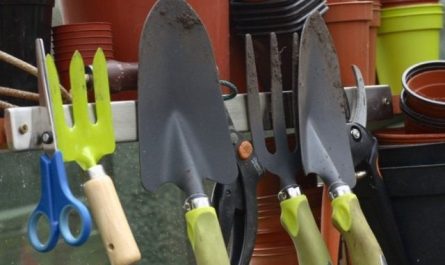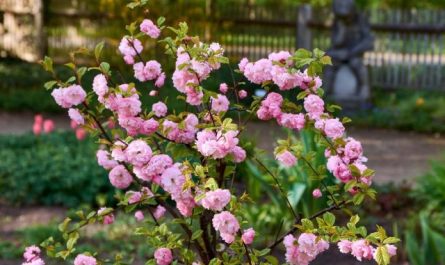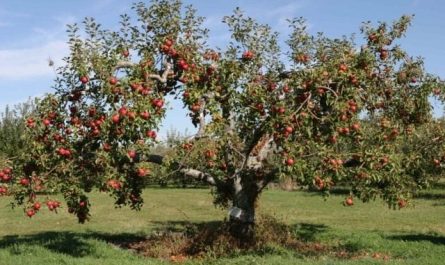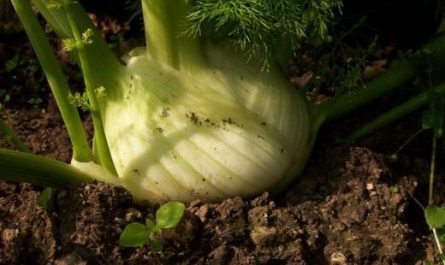The idea of chaotic gardening first gained popularity on TikTok, where it has amassed over 13 billion views. However, the trend has spread beyond the social media platform. In 2023, the famous Chelsea Flower Show brought the idea to the attention of professional gardeners.

We’ll talk in detail about what chaotic gardening is so you can decide if it’s right for you.
What is random gardening and what are its benefits?
Random gardening, also called intuitive or instinctive gardening, is exactly what the name suggests. In simple terms, it is a messy and casual approach to gardening where rules and careful site planning are thrown out the window. Do you find the process of planning your plantings and sowing seeds stressful? Random gardening will save you a lot of time and effort. In a nutshell, you simply take packets of seeds and scatter them around your garden to see what grows. The result is a natural-looking garden that is full of variety and life.
This approach to seeding can be used for any plant, including flowers, vegetables, and herbs. You can turn your entire garden into a wild garden of chaos, or just limit yourself to a few beds. Seeds are not planted in rows or in a specific pattern, but scattered randomly, allowing nature to decide where they will grow. They are scattered using a technique that mimics the natural fall and germination of seeds in the wild.
While this may seem absurd at first, the trick is to let go of expectations and let Mother Nature do her thing. The chaos garden is not just a trend, but a philosophy, a way to let go of control. But you have to be prepared for some plants to grow well and others to not. You might never see a single cabbage, but the sunflowers will thrive. The marigolds might be colorful, but the daisies won’t take root. Ultimately, you just have to let go and watch nature work its magic.

Many gardeners choose this method because it is convenient, low maintenance, and less expensive. TikTok devotees argue that chaotic gardening is simply a way to relieve the stress of carefully planned farming and bring back the fun they believe gardening should be.
Wildlife will also like this approach. Of course, many garden plants planted according to plan provide pollen and nectar for pollinators. But a chaotic garden without strict areas, plant varieties and more diversity will help attract more birds, pollinators and predatory insects to your site.
Inviting these creatures into your space helps support a local ecosystem with biodiversity, where many plants thrive and provide resources for fauna. It is also important to leave whole plants with seed heads in the garden after the growing season (they can become a habitat for overwintering insects).

While conventional gardening brings many environmental benefits, it is not without its drawbacks. Synthetic fertilizers and pesticides designed to control unwanted insects and weeds can have serious impacts on the ecosystem, including preventing beneficial insects from reproducing. And the lack of plant diversity in gardens does not contribute to the biodiversity of the area. Random gardening can help eliminate some of these problems of conventional farming, while adding beauty and joy to your garden.
Chaotic gardens also fit well with contemporary gardens and the move toward more natural, eco-friendly methods. They also provide sensory experiences through unexpected combinations of colors, shapes, textures, and even flavors when edible plants are included.
As the seeds germinate (at varying rates), the garden becomes a dynamic and ever-changing space. Some plants may dominate one season, while others emerge later, creating a continuous cycle of growth and renewal. This is the chaotic garden.
Basic principles of chaotic gardening
While chaotic gardening involves throwing out the rules, there are a few things to keep in mind if you plan to implement this approach in your garden.
Location
As with traditional flower beds and raised beds, the best location for a rambling garden is one that gets plenty of sun. That doesn’t mean you can’t do it in a shady spot, but you’ll have to choose plants that can survive in low light. The decision of how big you want the garden to be, as well as where you want it — in the front or back of the house — is entirely up to you.

Soil quality
It’s also important to consider the quality of your soil before you begin, as most seedlings need a rich, well-drained substrate to germinate and survive. If your soil is very rocky or clay-heavy, add some quality garden soil or compost before you begin sowing seeds in your messy garden.
Selection of plants
The types of plants you choose for your rambling garden play a major role in its longevity and maintenance. For example, choosing low-maintenance species and natural forms allows you to create a long-lasting garden that is not only low-maintenance but also eco-friendly.

When it comes to choosing plants, there is no right or wrong, just make sure the plants match your vision, avoiding those considered invasive in your area, and when planting annuals, keep in mind that they are only beautiful for one season.
Some chaotic gardeners also consider companion plants. These are plants that support each other, such as by repelling pests. And you might also scatter companion plant seeds near each other.
Features of care
As you might expect, a chaotic garden requires minimal maintenance. However, if you want your garden to thrive, you need to pay attention to it, especially during the first season. For example, after sowing, the seeds must be watered regularly to help them germinate. Once the seedlings begin to grow, you will need to thin them out a bit to prevent them from becoming too dense. Once the plantings are fully established and the plants begin to reproduce on their own, the amount of work will become less and less.
Take time to weed
Weeds will still appear in your garden; these are unwanted plants that crowd out your crops. Harmful seedlings can wrap around roots and stems, block sunlight, and steal nutrients and water. Many weeds, such as dandelions, reproduce by self-seeding. They will definitely appear next year and cause even more damage if left unchecked. Spend time weeding throughout the season, especially in early summer, to prevent weeds from spreading.

Landings in accordance with the law
No matter how free and chaotic the approach, it is always a good idea to check local regulations on planting. These laws cover the distance trees and shrubs should be placed relative to fences and neighboring buildings, the maximum height of trees under power lines, etc. This does not mean that you cannot practice chaotic gardening, but you may have to get creative to avoid turning your entire property into a chaotic flower meadow.




















